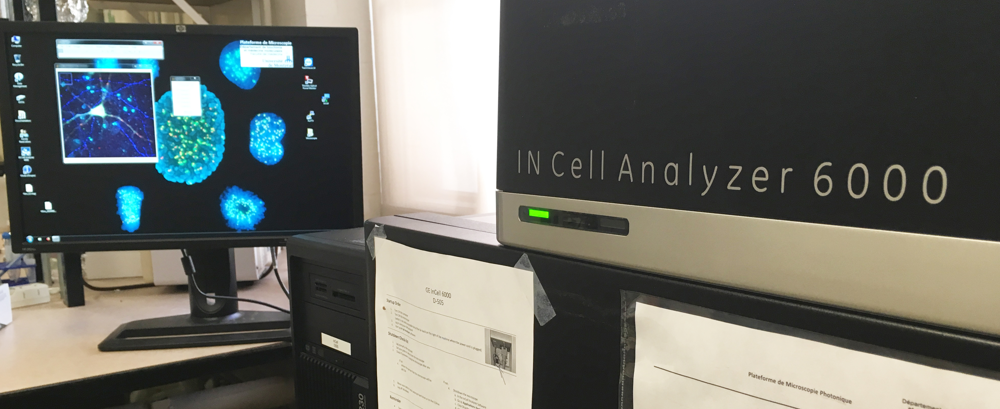GE InCell Analyzer 6000 High content microscope
JA Bombardier Building, Room 3129
Advanced Microscope Tier 2 usage price
Instrument awarded to Dr. Steve Michnick by the Canadian Foundation for Innovation (CFI # 33122) in 2015
Applications
- Inverted microscope
- Widefield imaging
- Brightfield
- Pseudo phase contrast and DIC
- Fluorescence
- Swept-field imaging
- Fluorescence
- High-throughput imaging
Description
Light sources
LED for transmitted light
Toptica iChrome MLE for fluorescence
Objectives
- 10x/0.45
- 20x/0.75
- 40x/0.6
- 60x/0.95
Filters
DAPI
GFP
Cy3
Cy5
- Cy5.5
Detector
- PCO.edge 5.5
User Guide
Manuals
Log
Technical Datasheet
Instrument Serial W24318-1493815 BK02029
Service Password apiAWL
Workstation
- HP Z230 Workstation Serial
- I139539-CIB
- Motherboard HP 1905 Chipset Intel C226
- BIOS L51 v01.62 v03.61 2019-10-06
- Processor Intel Core i7-4790 3.6 GHz
- RAM 16 GB (4 x 16 GB) DDR3 600 MHz
Drives
- OS 1 TB SSD at 530 MB/s
- Data Storage 2 TB at 170 MB/s (2 x 1 TB spanned volume)
- Video Card integrated Intel HD Graphics 4600
Monitor
HP Zr 24w 24" 1920 x 1200
- OS Windows 11 23H2
GE InCell ANalyzer 6000 v7.2 License files for temperature, transmitted light
